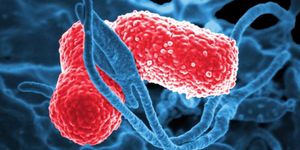A New Approach to Detecting Fraudulent Food
Food fraud is the act of deceiving someone about the food they are receiving, such as its quality or where it came from, usually for profit. Fraud in food production can cause billions in economic damages, and it is estimated that 10-30% of all food sold is actually fraudulent.
For example, wine made in Italy or France could be sold for a higher price than wines from other regions. But imagine buying a bottle of Italian wine, paying for a bottle of Italian wine, all the while unaware that the wine in the bottle was actually produced elsewhere.
While some of these distinctions about where a food product is produced may seem minor, food fraud can also impact health and safety. If products such as prescription drugs are produced with fraudulent material, for example, it can put people who rely on these medications at risk.
To make matters worse, it’s often hard to tell if a food product is fraudulent. Stable isotope analysis methods (specifically, the use of oxygen isotopes) are the leading forensic method for determining, for example, if claims about a food's geographic origin are false. Stable isotope analysis has been used in a range of different contexts, such as animal and human migration studies, because many plant/plant-based products have their own isotopic “fingerprint” that allow researchers to trace where a plant grows.
The challenge, however, is that these methods are not exactly quick or cheap--not only is a sample required of the alleged fraudulent material for testing, but samples of a similar product in nearby areas are also needed to compare and confirm the alleged product is fraudulent. Given these limitations, new, more efficient methods are needed for quickly determining a food product’s point of origin.
Researchers have developed a predictive model that may help address the limitation of current methods, according to a new paper published in Scientific Reports.
The model simulates oxygen isotope ratios in certain plants. This approach allows researchers to predict the geographical location of products and quickly determine if a suspected fraudulent product is actually “fake.”
The accuracy of the predictive model was tested on a strawberry species common in Europe using a unique oxygen isotope dataset for validation. Researchers found that the model could accurately and quickly predict the geographical origin of the berry.
In addition to combating food fraud, the model could also help track the origin of other allegedly falsified products, such as certain drug products or timber cut through illegal practices.
Sources: Eureka Alert!; Scientific Reports; United Nations; Nature








